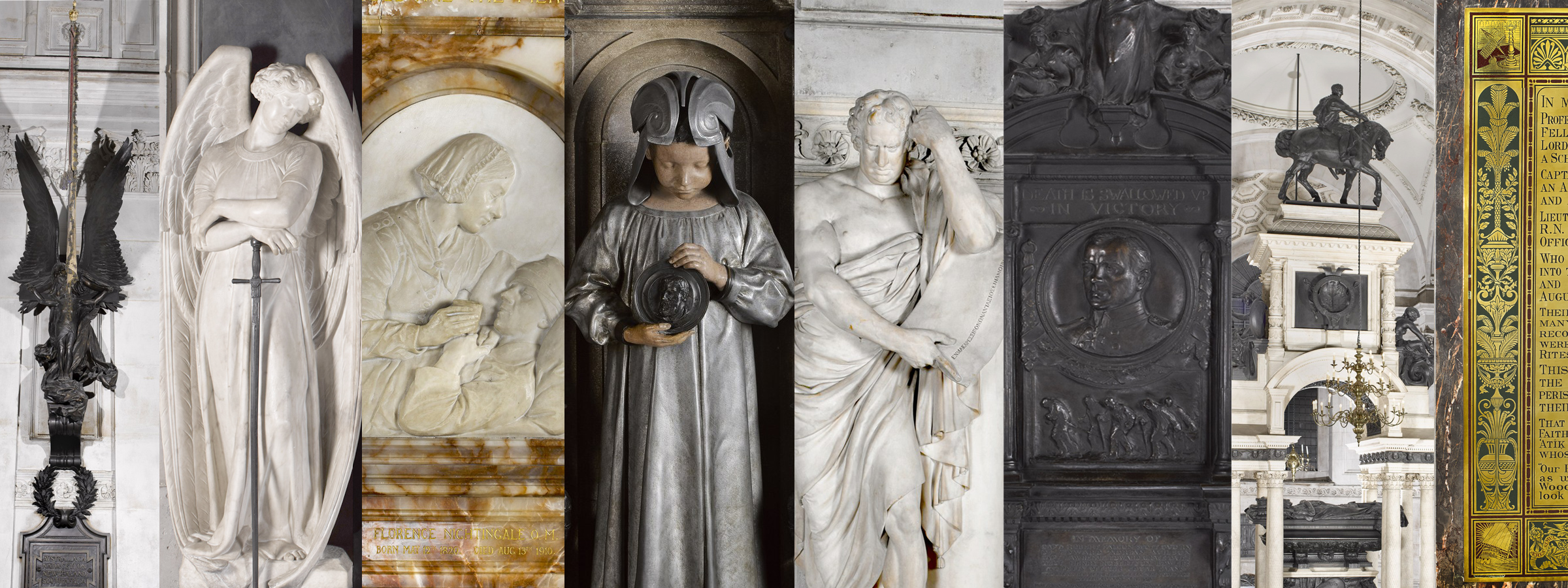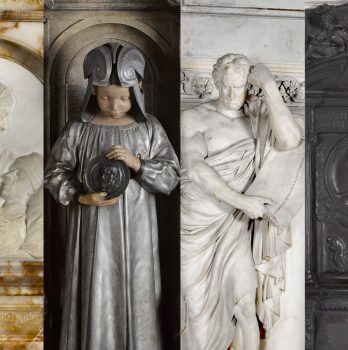‘To a Monument in St Paul’s Cathedral’: Writer and Teacher Cassie Westwood’s Response to the Monument to Admiral Richard Howe, 1st Earl Howe (1726–1799) by John Flaxman RA, 1802–1811

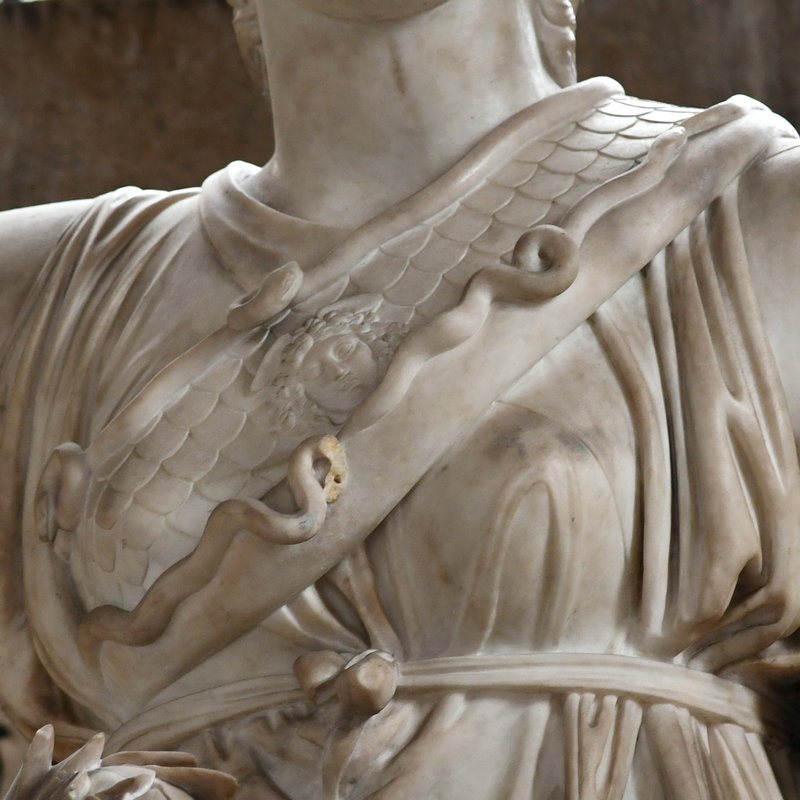
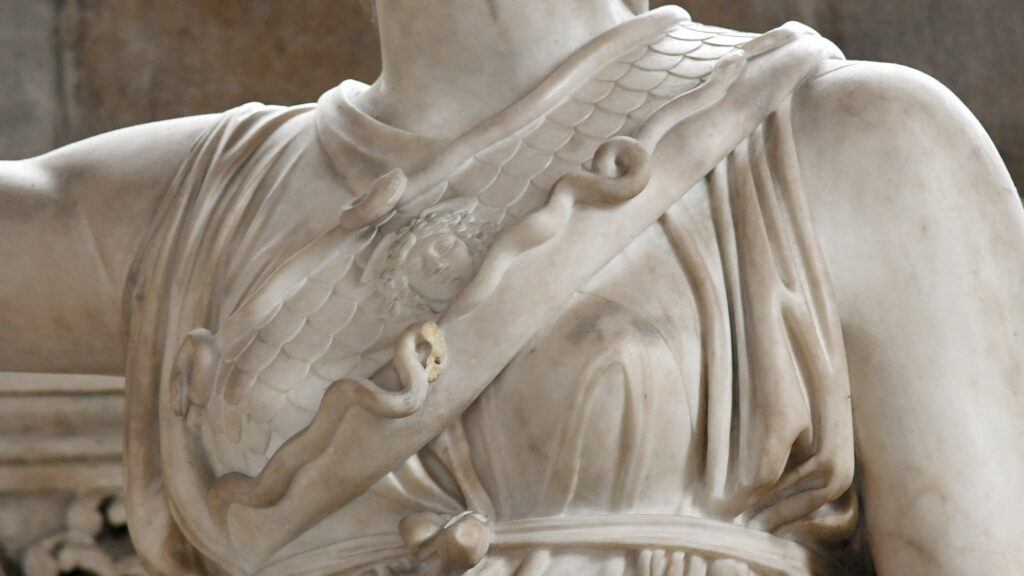
To a Monument in St Paul’s Cathedral
(for Jason)
By Cassie Westwood
You come to me in pieces, lassoed by snakes.
They tease their way up your torso
like a lover, like veins.
One leisurely frames
a nipple that buds through your own
scaled hide, wrapping a bull’s-eye
just off centre to make a target
of the sexy no man’s land
between breast and armpit.
Another breaks
for the horizon of your shoulder,
goaded by the promise of untracked
pristine back country slithering;
the place, Eve would say, unknown
to you but exposed to everyone else:
“Take care of him. He bites.”
Not this last,
though, whose head has been lost
to the rubble yard or the side-chapel’s
sweepings. Chipped, as it may have
happened, by human carelessness
chancing upon a flaw in the marble,
its body now is ornament and flourish –
headless, unsagacious, no more cunning
than the knotted belt above which it runs.
Tiresias came upon two snakes
trying to make a third; Hera watched
him intervene; and soon his nipples
were tender like the furled leaves
of early Spring; “the ‘female disease’
(as Herodotus calls it)” ran sinuous
through his blood. He will live long,
Tiresias herself had once said of a boy,
providing he never knows himself.
The vein
in the marble, the snake at the breast,
these are what carry from one part to the rest
the changes that can’t be foreseen:
the fault or shear, divine redress.
It’s the way knowledge worms
towards the heart that isn’t where
we thought it was. It’s the devil
in the details.
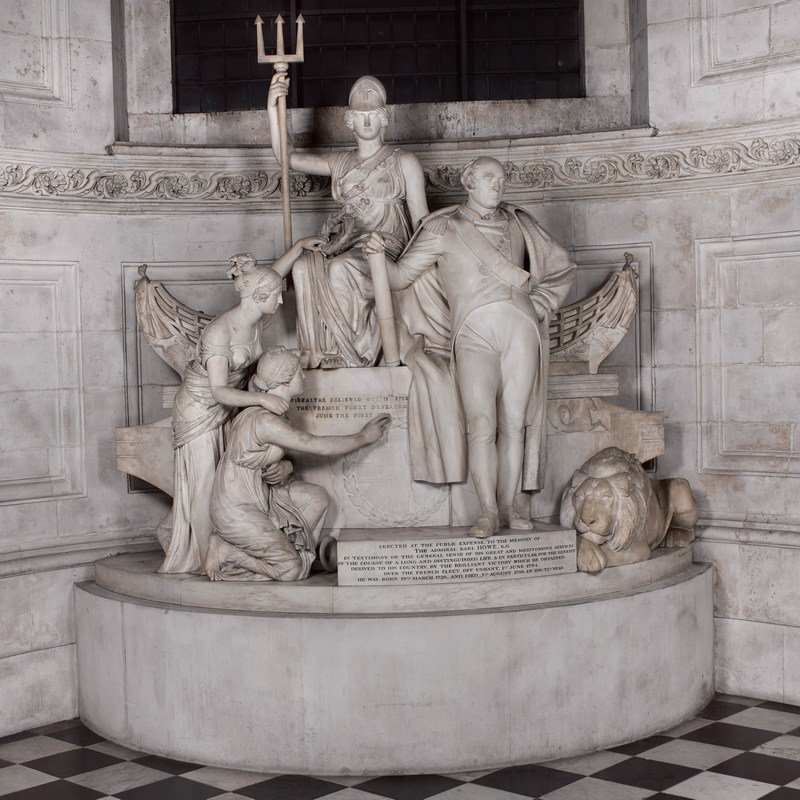
About Cassie Westwood
Dr Cassie Westwood is a writer and teacher. Her essays and reviews have appeared previously in Raritan, TLS, Essays in Criticism, and The Cambridge Quarterly, on topics including poetry, Dickens, animals, veganism, nonsense, queerness, and earworms. She recently co-wrote a film with Berlin-based director Lucy Beech, titled The Warm Decembers, which explored the connections between waste, creativity, and trans experience. The Warm Decembers was exhibited at the Kunstverein Gartenhaus, Vienna, and will move to Rotterdam in June 2023. Cassie lives in Oxford with her diva Chihuahua, Ruby.
Find Cassie on Twitter.
About the Monument
The monument to Admiral Richard Howe, 1st Earl Howe (1726–1799) was renowned sculptor John Flaxman RA‘s second commission for St Paul’s Cathedral and included on a grander scale elements from his first, a relief panel commemorating Captain Ralph Willett Miller (1762–1799). The Admiral stands as the central figure, though off centre, and very much alive, with the allegorical figures of Victory and Fame intent upon the upper part of the inscription. Behind them, Britannia is represented as a Minerva-like figure, complete with the Roman goddess’s Medusa-head breastplate. Flaxman animates the Medusa allusion further by detaching the snakes from her hair and showing them slithering their way up and down the breastplate – a motif that rewards closer inspection of this, and indeed, other monuments at the cathedral, as exemplified in Cassie Westwood’s poem, above.
